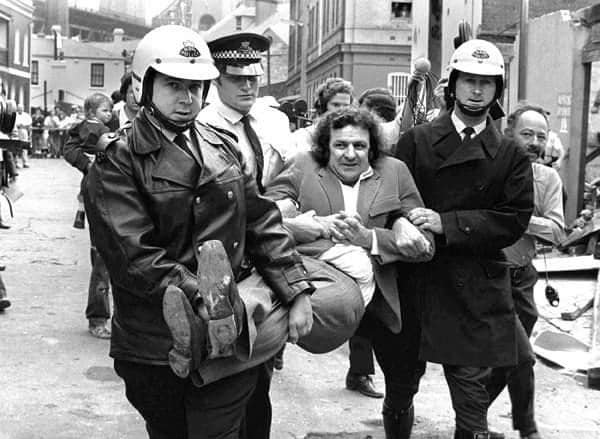Vale Jack Mundey

Today we pay tribute to Jack Mundey, renowned activist and prominent union leader, who has passed away at the age of 90.
As leader of the New South Wales Builders’ Labourers Federation (NSWBLF) in the 1970s, Mundey led collective union action to protect against overdevelopment, saving much of Sydney’s cultural heritage. The union refused to work on projects that were environmentally and socially destructive, leading what later became known as the Green Ban Movement, the first of its type in the world. This movement across Australia saved many heritage sites slated for demolition, including Tasma Terrace, the head office of the National Trust of Australia (Victoria).
Most famously, Mundey and the NSWBLF were responsible for saving the oldest buildings in Australia in The Rocks historic neighbourhood, and preventing development of its foreshore parks. They saw that the proposed new developments would not only destroy the historic fabric of The Rocks, but would also remove amenities and affordable housing, pushing low-income residents out of the traditionally working-class neighbourhood. The NSWBLF refused to work on the redevelopment projects, citing their destruction of the area’s character and its effect on residents.
Mundey outlined the union’s position in a letter to the Sydney Morning Herald in 1972:
Yes, we want to build. However, we prefer to build urgently-required hospitals, schools, other public utilities, high-quality flats, units and houses, provided they are designed with adequate concern for the environment, than to build ugly unimaginative architecturally-bankrupt blocks of concrete and glass offices…Though we want all our members employed, we will not just become robots directed by developer-builders who value the dollar at the expense of the environment. More and more, we are going to determine which buildings we will build …The environmental interests of three million people are at stake and cannot be left to developers and building employers whose main concern is making profit. Progressive unions, like ours, therefore have a very useful social role to play in the citizens’ interest, and we intend to play it. [6]Quoted in Pete Thomas, Taming the Concrete Jungle: The Builders Laborers’ Story, Australian Builders Labourers Federation, Sydney, 1973, pp 56–7.
The Green Bans were instrumental in saving many National Trust classified buildings. NSWBLF and the National Trust worked in partnership in the 1970s to save culturally significant sites from destruction, and the NSWBLF refused to demolish the 1700 buildings in NSW recommended for preservation by the National Trust.
Mundey never ceased fighting against inappropriate and unsustainable development, continuing to campaign for environmental and heritage protections in Sydney, and the right for working-class people to live in the inner-city and not be driven out by socially irresponsible development. He continues to be a source of inspiration for advocates and activists, now and for generations to come. Rest in Power, Jack Mundey.
For more information on the Green Bans Movement, see Burgmann and Burgmann’s excellent history in The Dictionary of Sydney: https://dictionaryofsydney.org/entry/green_bans_movement
Rocking the Foundations documents the Green Ban Movement and its remarkable contribution to heritage and community-building. Available to stream at: https://www.roninfilms.com.au/feature/474/rocking-foundations.html
+ There are no comments
Add yours